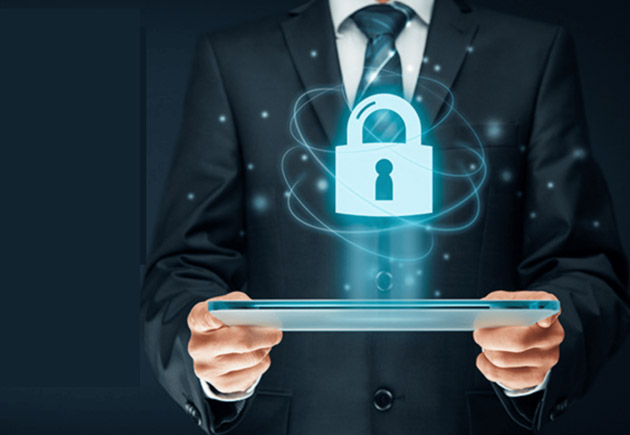Mohammad Hanief
Information Technology has made a significant contribution and impact on socio-economic scenarios. Rapid adoption of digital technology has led to employment generation, ease of living, ease of doing business and access to information.
In today’s digital world, one cannot ignore cyber security. One single security breach can lead to exposing the personal information of millions of people. These breaches have a strong financial impact on the companies and also loss of the trust of customers. Hence, cyber security is very essential to protect businesses and individuals from spammers and cyber criminals.
Today’s cyber security industry is primarily focused on protecting devices and systems from attackers. While the bits and bytes behind these efforts can be hard to visualize, it’s much easier to consider the effects.
Cybersecurity is the protection to defend internet-connected devices and services from malicious attacks by hackers, spammers, and cybercriminals. The practice is used by companies to protect against phishing schemes, ransomware attacks, identity theft, data breaches, and financial losses.
Look around today’s world, and you’ll see that daily life is more dependent on technology than ever before. The benefits of this trend range from near-instant access to information on the Internet to the modern conveniences provided by smart home automation technology and concepts like the Internet of Things.
With so much good coming from technology, it can be hard to believe that potential threats lurk behind every device and platform. Yet, despite society’s rosy perception of modern advances, cyber security threats presented by modern tech are a real danger.
A steady rise in cybercrime highlights the flaws in devices and services we’ve come to depend on. This concern forces us to ask what cyber security is, why it’s essential, and what to learn about it.
Cyber security is a discipline that covers how to defend devices and services from electronic attacks by nefarious actors such as hackers, spammers, and cybercriminals. While some components of cyber security are designed to strike first, most of today’s professionals focus more on determining the best way to defend all assets, from computers and smartphones to networks and databases, from attacks.
Cyber security has been used as a catch-all term in the media to describe the process of protection against every form of cybercrime, from identity theft to international digital weapons. These labels are valid, but they fail to capture the true nature of cyber security for those without a computer science degree or experience in the digital industry.
Application security covers the implementation of different defenses in an organization’s software and services against a diverse range of threats. This sub-domain requires cyber security experts to write secure code, design secure application architectures, implement robust data input validation, and more, to minimize the chance of unauthorized access or modification of application resources.
Cloud security relates to creating secure cloud architectures and applications for companies that use cloud service providers like Amazon Web Services, Google, Azure, Rackspace, etc.
This subdomain covers activities, frameworks, and processes that enable authorization and authentication of legitimate individuals to an organization’s information systems. These measures involve implementing powerful information storage mechanisms that secure the data, whether in transition or residing on a server or computer. In addition, this sub-domain makes greater use of authentication protocols, whether two-factor or multi-factor.
Mobile security is a big deal today as more people rely on mobile devices. This subdomain protects organizational and personal information stored on mobile devices like tablets, cell phones, and laptops from different threats like unauthorized access, device loss or theft, malware, viruses, etc. In addition, mobile security employs authentication and education to help amplify security.
Network security covers hardware and software mechanisms that protect the network and infrastructure from disruptions, unauthorized access, and other abuses. Effective network security protects organizational assets against a wide range of threats from within or outside the organization.
Not all threats are human-based. The DR BC subdomain covers processes, alerts, monitoring, and plans designed to help organizations prepare for keeping their business-critical systems running during and after any sort of incident (massive power outages, fires, natural disasters), and resuming and recovering lost operations and systems in the incident’s aftermath.
Knowledge is power, and staff awareness of cyber threats is valuable in the cyber security puzzle. Giving business staff training on the fundamentals of computer security is critical in raising awareness about industry best practices, organizational procedures and policies, monitoring, and reporting suspicious, malicious activities. This sub domain covers cyber security-related classes, programs, and certifications.
We are well aware that cyber attacks are continuing to grow. In today’s technology era, organizations and individuals must protect themselves against most types of threats. Unfortunately, there is a handful of cyber security misconceptions that are still holding too many people back from taking the necessary action to safeguard personal sensitive information.
One should not solely rely on passwords to keep the data safe. While strong passwords are essential, cybercriminals may still find ways to hack them. Hence it is necessary to implement robust cyber security measures, to have a multilayered defense.
By deleting the data from the computer, the file moves to the Recycle Bin and then empties it. Even after deleting the data, the data remains in the hard drive for example in the temporary files folder.
Some organizations retain the opinion that encryption software is something they can do without. It is a misconception that encryption will avoid data breaches. Encryption plays a vital role in defending against cybercriminals and ransomware attacks.
Adoptions of digital technology and internet have also led to increase in cyber crime incidents. It can be controlled or minimized with care, precaution, awareness and with the use of appropriate tools to secure the information.
Trending Now
E-Paper


